my program.cs file has the following code
using fac.MongoConn;
using fac.Services;
using Microsoft.AspNetCore.Authentication.JwtBearer;
using Microsoft.AspNetCore.Session;
using Microsoft.IdentityModel.Tokens;
using System.Text;
using Microsoft.AspNetCore.Cors;
var builder = WebApplication.CreateBuilder(args);
var MyAllowSpecificOrigins = "_myAllowSpecificOrigins";
builder.Services.AddCors(options =>
{
options.AddPolicy(name: MyAllowSpecificOrigins, builder =>
{
builder.WithOrigins("http://localhost:3000")
.AllowAnyMethod()
.AllowAnyHeader();
});
});
builder.Services.Configure<MongoDBSettings>(builder.Configuration.GetSection("MondoDB"));
builder.Services.AddSingleton<MongoDBService>();
builder.Services.AddHttpContextAccessor();
builder.Services.AddMemoryCache();
builder.Services.AddDistributedMemoryCache();
builder.Services.AddSession(options =>
{
options.Cookie.Name = "Session";
options.IdleTimeout = TimeSpan.FromMinutes(30);
options.Cookie.HttpOnly = true;
options.Cookie.IsEssential = true;
});
builder.Services.AddAuthentication(JwtBearerDefaults.AuthenticationScheme).AddJwtBearer(options =>
{
options.RequireHttpsMetadata = false;
options.SaveToken = true;
options.TokenValidationParameters = new TokenValidationParameters()
{
ValidateIssuer = true,
ValidateAudience = true,
ValidAudience = builder.Configuration["Jwt:Audience"],
ValidIssuer = builder.Configuration["Jwt:Issuer"],
IssuerSigningKey = new SymmetricSecurityKey(Encoding.UTF8.GetBytes(builder.Configuration["Jwt:Key"]!))
};
});
// Add services to the container.
builder.Services.AddControllers();
// Learn more about configuring Swagger/OpenAPI at https://aka.ms/aspnetcore/swashbuckle
builder.Services.AddEndpointsApiExplorer();
builder.Services.AddSwaggerGen();
var app = builder.Build();
// Configure the HTTP request pipeline.
if (app.Environment.IsDevelopment())
{
app.UseSwagger();
app.UseSwaggerUI();
}
app.UseHttpsRedirection();
app.UseSession();
app.UseAuthorization();
app.UseAuthorization();
app.UseCors(MyAllowSpecificOrigins);
app.MapControllers();
app.Run();
my tesst.cs controller has the following code
using Microsoft.AspNetCore.Cors;
using Microsoft.AspNetCore.Http;
using Microsoft.AspNetCore.Mvc;
namespace fac.Controllers
{
[EnableCors("_myAllowSpecificOrigins")]
[Route("api/[controller]")]
[ApiController]
public class test : ControllerBase
{
[HttpGet]
public IActionResult Index()
{
return Ok("test");
}
}
}
and i have created a simple form using react
import React,{useEffect, useState} from 'react'
import axios from 'axios';
const Login = () => {
const [user,setUser] = useState({
username: '',
password: ''
})
const {username,password} = user;
const chnageHandler = e => {
setUser({...user,[e.target.name]:[e.target.value]})
}
// useEffect(() => {
// });
const loginUser = async () => {
try {
const response = await axios.get('http://localhost:5082/api/test');
console.log(response);
} catch (error) {
console.log(error);
}
}
const submitHandller = e => {
e.preventDefault()
loginUser();
console.log(user)
}
return (
<div>
<center>
<form onSubmit={submitHandller}>
<input type='text' name='username' value={username} onChange={chnageHandler}/> <br/>
<input type='password' name='password' value={password} onChange={chnageHandler}/><br/>
<input type='submit' name='submit'/>
</form>
</center>
</div>
)
}
export default Login
Firstly, apologies if I wasn't maintaining good approaches. Please help me to resolve this issue and give some suggestions for good code practices. /////////////////////////////////////////////////////////////////////////////////////////////////////////////////////////////////////////////////////////////////////////
